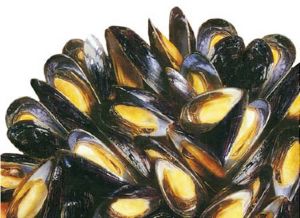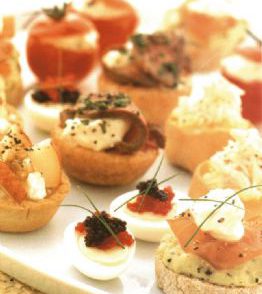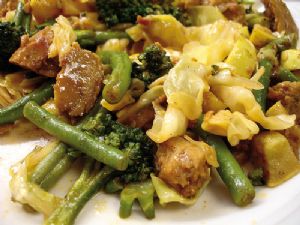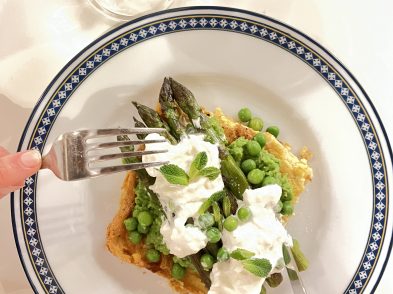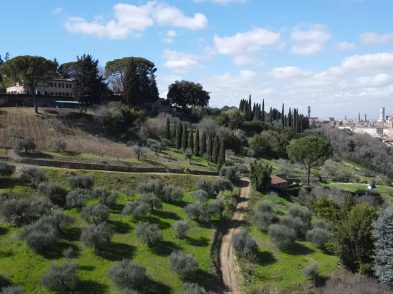If you switch on the TV, open a paper, walk into a shop, stroll down the street, go into a bar, or just eavesdrop on someone else’s conversation, you’re reminded that things are actually quite gloomy, money-wise, right now. Nobody really knows whether or not they’re going to have a job tomorrow, and we’re being urged to save our cents where we can. So with this in mind, it’s time to take a slightly more reflective look at food. Let’s think about how we can eat well for less.
Naturally, I’d recommend setting up a rain barrel in your garden or in front of your house and drinking only the water collected there. Wild grasses can be picked and dried, and then turned into tea, bread, stews or even, if rolled judiciously, fashioned into replacement joints of meat for roasting. Additionally, now might be the time to hunt urban animals for use as pie fillings. And have you ever noticed how filling moistened waste paper is?
Only joking, of course. Although if you are the type of person who goes around eavesdropping on other people’s private conversations, then you deserve to eat a bit of mushed magazine and drink leafy rainwater once in a while. Yes, times are going to be hard, but you needn’t compromise on tasty, filling food. Substituting ingredients, bulking out the pricier foodstuffs, economizing with longevity and leftovers and discovering cheap and flavoursome alternatives are all techniques for which your bank manager will thank you.
Think about the most expensive items in Italian supermarkets: some fresh meats, certain types of fish, and the pricier, more delicately flavoured vegetables and herbs. What can you substitute for these? What might have similar texture and taste but won’t cost as much? For example, if you take a turkey breast steak, hammer it flat with a rolling pin between two pieces of clingfilm, flour it, season it liberally and then sauté it in butter, you are left with something very similar to veal in terms of texture and flavour. Add a sage leaf or two and a piece of flattened pancetta and you have the base of a passable, budget-friendly saltimbocca.
Fortunately, the availability of dried saffron in single-euro packs means that you can still enjoy this most expensive of spices in your risotto, but if you can’t find it, a pinch of turmeric, a pinch of cayenne pepper and a light shaking of salt will duplicate the taste and colour of saffron in rice dishes and sauces. Don’t discard the thick stems of herbs once you’ve chopped and used the leaves: wash them well, freeze them and then defrost in batches, puree them, and use them in sauces and to make herb crusts for fish and meat. Woody stems, like rosemary, can be cooked in a small pan full of oil: the oil, when cooled, takes on the flavour of the herb and can be used in hot or cold dishes.
You can extend the number of portions you get from meat and fish by wrapping them in parcel-style dishes like the English dish, beef Wellington, or any French en croute or timbale dishes. You may have encountered timballo dishes in Italy. Pastry, as it cooks, takes on the flavours of its fillings, and obviously adds bulk. If you cook flavoursome fish such as salmon in pastry parcels with seasoned rice, you can make one portion of fish stretch to feed three people. Beef and veal can be cooked in pastry with mushroom and prosciutto in order to make them go further. Chicken can be bulked out with cream sauce and plenty of chopped leeks, plus crumbled or chopped sage and fried onions, in a pastry shell.
Using filling ingredients that take on the flavours of more expensive foodstuff is a tactic for desserts, too. Pricier fruits such as berries, cooked in their own juices and sugar to form a light compote make a great filling for chilled desserts made out of slices of leftover panettone. You can also make a dessert out of slices of the same, dusted with sugar and toasted, and then topped with the warm fruit.
Ingredient of the fortnight: BUTTER
Where would we be without this stuff? You know what it is: it comes in block, is made by cows and tastes like happiness. It’s generally around 80 percent fat and consists of no more than 16 percent water. And there’s something really special about Italian butter, which is particularly pale and interesting: its delicate complexion comes from the fact that Italian cows tend to enjoy a diet low in carotene, and the flavour undoubtedly comes from the amazing grass they get to munch on.
Rubbed into flour and mixed with water, butter makes pastry. Beaten with sugar and egg and then combined with sifted flour, butter makes cake. Cooked with flour, butter makes roux, which is used to thicken and add flavour and richness to sauces worldwide. But in Italian food, it plays its best role in soups, sauces, pasta dishes and risottos. Ravioli served with butter and sage sauce, for example, where the creamy dairy notes temper the smoky, bitter sage, is the kind of dish visitors to the country hallucinate about for months after they leave. And a bit of buttered bread dipped into a rich fish broth, with mussels and clams, manages to be filling, warming, satisfying, delicate and decadent at the same time.
Mix it into your ragù to add huge new rich tastes. Shallow-fry herbs in it to produce a truly amazing combination of flavours. Place it on field mushrooms, with a good sprinkle of parsley, then roast them quickly in a hot oven: you have a filling, juicy and thoroughly satisfying snack.
Recipe of the fortnight: TUONI e LAMPI
350g broken pasta pieces or small pasta shapes
2 slices of stale bread
3 tbsp olive oil
30g butter for the onions, plus another
10g for the broth
1 white onion, peeled and sliced into rings
1 tin of chick peas, drained and rinsed
1 delicato stock cube
Cook the pasta in salted water, until al dente.
Crumble the bread into coarse breadcrumbs, or use a food processor to achieve the same effect. Heat the oil in a pan and fry these until they are just starting to toast and turn golden brown. Drain these breadcrumbs on kitchen towel.
Melt 30g of the butter in the same pan and then add the onions.
Fry until golden brown.
Heat 450ml of water in a saucepan. Add the delicato stock cube and the chick peas. Stir in the remaining butter. Cook until the chick peas are soft and piping hot.
Spoon cooked pasta into bowls. Add the chick peas, and then pour the broth over. Finally, top with the onions, and sprinkle over the toasted breadcrumbs.

